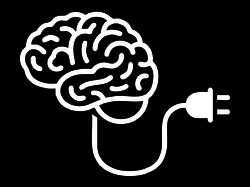It’s already become a tired cliche: “AI won’t take your job, but someone using AI will.” The phrase is starting to feel overstated because AI, while helpful, isn’t proving to be as revolutionary as its proponents promised… but it is becoming an everyday technology.
At first it felt like AI gave us, the tech savvy, an edge. What happens now that recruiters, bosses, and peers have caught on and AI has become the expectation? In Fisayo Osilaja’s recent talk at the Rosenfeld Futures: “Designing with AI” conference, Osilaja discussed how she used AI to catapult her career from researcher to strategist—a “super researcher.” In Amy Webb’s 2024 SXSW talk, Webb talked about how AI could be used by attendees to generate SXSW roundup reports for their higher-ups. She even joked that attendees could use the time they saved to sip margaritas. But will 2024’s tequila time carry over to next year– when everyone else is using the same AI time savers, too?
I was a college senior when OpenAI released ChatGPT in late November 2022. On campus, this meant that a powerfully accessible AI tool was unleashed just in time for finals. It could summarize the books you hadn’t read, write code you hadn’t bothered to learn, and write essays you hadn’t gotten to yet. December 2022 was a short but golden age of plagiarism for many of my classmates; teachers had already written or planned their final exams, and tools to detect if students had used AI were not yet widespread.
By spring 2023, the next finals season, the sun had mostly set on rampant AI plagiarism. Teachers were redesigning their exams to make it harder to cheat, and there were hosts of software platforms that promised to catch their students if they did. But, students still use AI. The typical student might not be turning in work straight as it’s generated (or maybe they are), but they’re certainly using it in their workflow. Etiquette is forming, and norms have been established. Most importantly, it’s not the students who adopted the technology first who benefit the most from AI in the post AI-plagiarism era, but those who found a good place for it in their workflow.
Are we in the golden age of sneaky workplace AI? The same cycle I experienced in school seems to be happening in the workplace, now complicated by an undercurrent of corporate anxiety. According to a May 2024 study by Microsoft, 75% of knowledge workers are using AI at work. Seventy-eight percent of those AI users are incorporating tools into their work that are not provided by their employers, a phenomenon the study’s authors have dubbed BYOAI. Just under half of those AI users started using AI at work in the past six months. These numbers are probably low: the same study shows that 52% of people who use AI at work are reluctant to admit to using it for their most important tasks. Fifty-three percent say they worry that using AI on important work tasks makes them look replaceable.
There’s an irony here: at a time when C-levels are actively trying to realize efficiencies with AI; individuals are tentatively doing so in their own personal practice—but they’re not sure if that’s okay. Is it cheating to use AI, or is it a savvy way to get an edge? As a result, there’s an unreported pocket of productivity that individual employees are silently mining—and not telling their bosses.
The unreported nature of this productivity will change as AI use in the workplace is normalized and as etiquette regarding AI’s use becomes formalized. Just as it happened on school campuses in 2022, hidden use of AI will yield to open use as norms are established. That normalization is already starting to happen. Those that benefit the most will be the ones who find appropriate places for the tool in their workflow. AI-powered tools are becoming everyday productivity tools like spreadsheets and word processors. That’s a good thing, by the way: technology tends to become more powerful as it becomes more ordinary.
So now what? The competitive edge of early adoption will fade quickly: Alas, when everyone’s special, nobody’s special. No sneaking off for solo margarita celebrations anymore. The AI advantages (and celebrations) that are more likely to emerge are at the team and organizational level. While AI might be giving the tech-savvy an edge for now, employers and peers will soon adapt. While my time at school showed me how individuals can benefit from AI integration, my research at Big Medium is showing that workplace adoption of AI is less about creating an individual competitive edge—that blade is getting blunter with every new adopter—but more about how adoption by a team can speed and elevate the work of everyone. So how can your team realize these benefits?
We’re finding that these elevations happen when:
Teams normalize the use of AI tools in everyday work. Teams who are open about their AI use and communicate their personal innovations will see the whole team progress faster. Openness, communication, and regular use breeds innovation.
Teams can adapt processes and workflow to accommodate AI. Thoughtful teams consider their own strengths and weaknesses as well as their tools’. How can AI fill in for parts of a process that the team is not good at? What is the team much better at than AI? When is the human in the loop?
Organizers establish clear guidelines and quality expectations for AI-supported work, including transparency and QA.
These are all themes that we’re following in adapting our own design and development processes at Big Medium. You can get a peek at how that plays out by watching our recent AI and Design Systems online event.
AI brings the opportunity to elevate the work of the whole workplace, not just the individual. If business is focused on efficiency, let’s realize those dividends in better results and higher revenues that benefit all of us. Just as it doesn’t help students to use AI to completely take over their homework, we can see that AI works best in the workplace as an enabler more than a replacement for critical human tasks. Indeed, the core principle of Sentient Design is that AI should amplify our agency and judgment instead of replacing them. AI may not be revolutionary, but it’s powerfully evolutionary in elevating the everyday work we all do—together.
Looking for help on the strategy, design, or development of AI-powered products and features? That’s what we do! Get in touch to learn more about our engagements, workshops, and Sentient Design sprints, or sign up for our newsletter to keep up with everything Big Medium is sharing about AI and Sentient Design.





